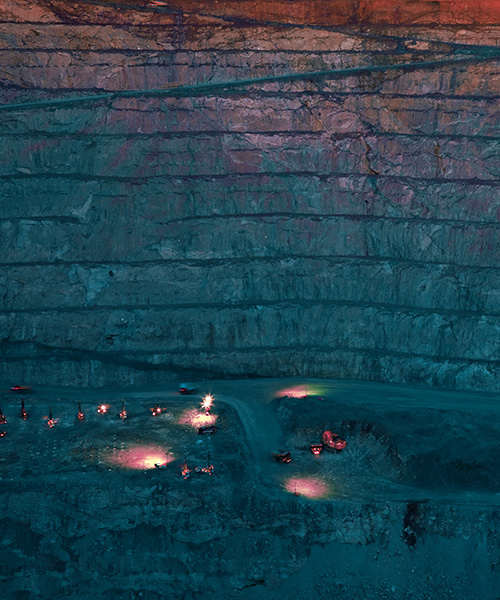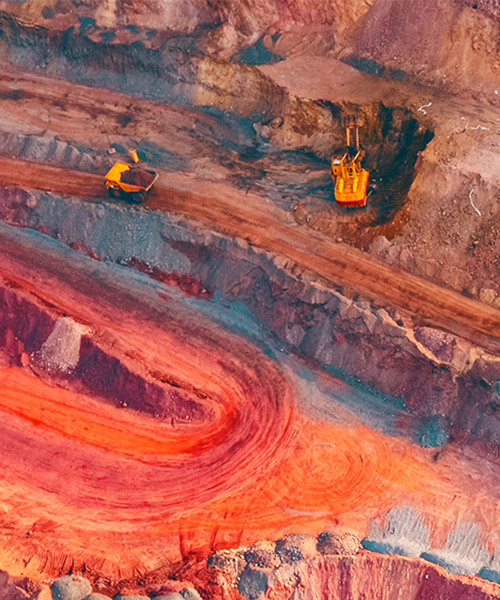October 06, 2020 • 5 min read
The future of mining: Why smaller projects can make the most sense
Could developing the smallest viable project become the new norm in mining?
With raw and refined material prices rising, it’s a good time to do a project. However, mining projects still need careful consideration as mine owners look to reorganize their portfolios, decarbonize their operations and expand their supply of critical materials.
With many sitting on large ore bodies, the temptation is to realize the greatest revenue in the fastest possible timeframe. But is this always the best method?
The problem with big projects
Typically, owners of large projects optimize purely on net present value. This means choosing a project that gives economies of scale, with low operating costs that result in the greatest long term economic award.
Large mines can take many years to develop, even longer to achieve payback and usually involve significant upfront capital expenditure.
While these projects provide big capital returns, the patience needed to get to that point translates into higher risk, especially when ore bodies are complex or difficult to assess from the surface. Some ore bodies are big enough to warrant a project seeking to maximize net present value, but they often come with significant development challenges.
That’s why we need an option between developing a mega project with all the associated risk and leaving the product in the ground.
The benefits of smaller projects
There’s growing recognition that a staged approach can facilitate earlier cash flow from operations, reduce risk and still achieve good financial returns based on a lower cost of entry. A mine that’s initially developed with the minimum viable features can be a big success, but it needs different thinking. It needs us to think small.
By thinking small and minimizing a starter project, we can reduce initial costs, de-risk the project and still enable a pathway to build a bigger mine in the future. Miners are no longer racing to get the highest overall return or the absolute maximum net present value. Or at least not right away.
They’re looking for an outcome acceptable from a corporate, social, financial and operational perspective. One that’s sustainable and presents a lower development risk at the outset. This is particularly valid for ore bodies that are large and deep, because they often require high capital expenditure before the ore body is completely understood.
When a project minimizes the amount of upfront capital costs, miners can get a mine up and running sooner and at lower cost. With less initial sunk capital comes better management of market fluctuations and uncertainties common in mining projects.
Finding the minimum viable point for your project
Minimum viable projects design the scale of a mine to its minimum viable point. That is, as basic as it can be while still earning a return.
This is about having the right sized pieces fitting together and making decisions for the here and now. This approach is still mindful of the future. It just avoids incurring future costs in the present.
Establishing this point is an art form in itself. Miners need to consider the limitations of each input; from energy supply to ore body knowledge, mining plans, off-take requirements, procurement and logistics through to construction, commissioning operations and closure.
There’s often some unconventional thinking involved in driving the minimum viable point even lower.
We also investigate alternative development approaches. For example, shared infrastructure, different commercial strategies and partnering with other companies and operations. Every option should be considered to bring the initial investment down.
Balancing capital expenditure with return on investment
Once the pieces of a minimum viable project fit together, the second driver is to determine the minimum size of the project while still being economically viable. This is called the minimum viable capital cost.
Finding the minimum viable capital cost is a two-fold approach. We need to understand the minimum from a technical perspective, then from a financial perspective.
As projects go further down in scale, economies of scale are naturally compromised. Eventually there will come a point where a project just isn’t feasible. It’s a tradeoff between how small things can be depending on project components.
This becomes a model where small scale operations pay for most of the costs delayed initially, though a margin is still needed for upfront capital costs. A balance needs to be struck between how much is spent versus how much is owned, and how small the project can be while still being operable.
When it’s time to build something bigger
Minimum viable projects afford the flexibility to get a mine up and running and learn lessons from the first stage before committing to anything larger. But what happens when conditions warrant an increase in production?
If the initial mine and plant are designed well, we can scale it. And should market forecasts remain positive, then other parts of your project can expand in whatever manner makes sense. With the groundwork already in place, we can base this on actual market needs and financial and operational drivers, not a set of assumed future financial and operational drivers.
Miners may be better off developing three expansions over the life of the project. Or, if the market changes in unexpected ways, it may be better to delay the expansion.
However, scalability doesn’t necessarily mean a slower project. If anything, it accelerates the development schedule.
Getting proven technology into the base design allows us to identify where we want to carry heightened risk, or alternatively, to get the project entry point up and running and then evolve and innovate.
It also delays some decisions around technology investment to a point where the price can be 20 or 30 percent cheaper because of advancements in manufacturing. And if what is implemented is a value enhancement, it will give a return immediately because it’s on an operating site. It’s not just a theoretical evaluation.
The minimum viable project model is well suited to periods of uncertainty
A smaller investment to get a minimum viable project started provides the flexibility to respond to the market’s next movements.
With this approach, we’re helping our customers realize solutions that facilitate cash flow sooner, minimize entry capital cost and allow a project to pay its own way. It’s taking the mindset of a junior and select mid-tier mining company and applying this to a much larger project.
Minimum viable projects are an easier investment decision at a time like this. And they’re proof that thinking small is a good way to get big projects right.




